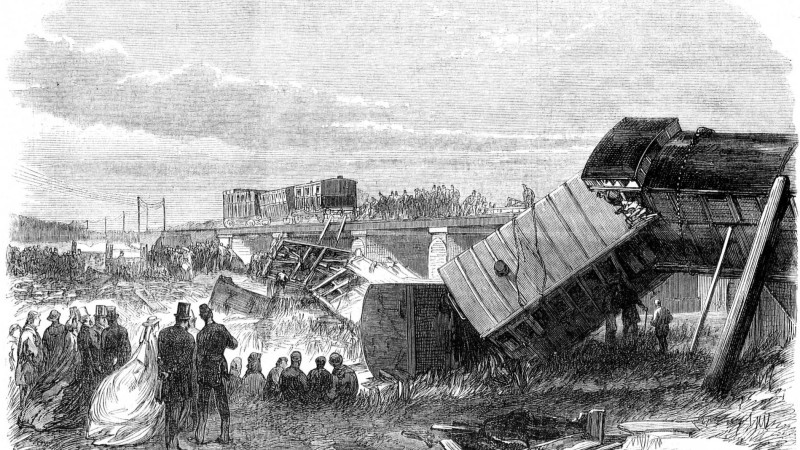
© London Illustrated News 1865
R.2020
Steel wheel on steel rail
Sitting in a station café, you can bask in the romance of railway travel and watch the trains come and go. At a nearby stall a man is leafing through a book about steam engines. Passengers gather on the concourse where they scan the destination board and listen for the announcements that echo from the roof above. In the distance beyond lies an alien world of tracks that cross one another as they converge on the station through a gash in the city landscape. The tracks come to life when a train approaches, and humming with latent power, docks slowly alongside the platform. For the seasoned traveller, no other kind of transport system holds quite the same fascination.
Railway engineers often refer to the railway track as a ‘road’. But it is very different from the highway that passes in front of your house. The train wheels roll on two steel bands each with a surface only a few millimetres wide. The routes they follow reveal spectacular views. Being relatively narrow, railway tracks can penetrate the landscape, rising on viaducts and tunnelling through hills in a way that would be too costly for a motorway. On a train ride you can take in scenes that a car driver cannot: for example the eastbound journey from London to Thanet where the line sweeps across the North Downs, descends and curves sharply towards the Medway Estuary, then rumbles across the bridge towards Rochester Castle on the far shore.
Railway travel is not always a magical experience, though. Although it’s much safer than riding in a car, things can go wrong. On 9 June 1865, the Folkestone-to-London boat train derailed at about 50 miles per hour (80km/h) while crossing the Beult River viaduct, a modest structure about 3 metres high. Seconds earlier, after passing through Headcorn railway station the driver had seen a man waving a red flag. But he could not stop the train before it rolled onto the viaduct, where a length of track had been removed during engineering works. Seven of the coaches fell into the river bed, killing ten passengers and injuring forty. Among the passengers was Charles Dickens, who was travelling with a friend. Dickens survived and helped to look after the victims, some of whom died before they could be taken to hospital. Deeply distressed by the accident, he could not speak for days. According to his son, he never fully recovered before his death five years later.
Since then, there have been rail crashes in many countries, some more serious in terms of human casualties. But they all remind one that the safety of railway travel is uniquely sensitive to the condition of the track. A large part of the railway operator’s budget is devoted to its upkeep: looking for flaws, grinding the rail surface, and adjusting the alignment in order to ensure a smooth ride. Even with the rails firmly in position, there is a small margin of error that determines whether a train runs normally or risks being derailed: about 8 millimetres, in a sense that will become clear as we go along. The interaction between the train and the track is more interesting and more complex than you might imagine. At normal speeds, a railway bogie will steer itself smoothly round each curve in the track, but at speeds above a certain critical level, its behaviour becomes erratic. In what follows, we’ll start by looking at what happens within the contact patch between wheel and rail.
Acknowledgement
Drawing of Beult Viaduct rail crash scene from Illustrated London News 1865, available at https://en.wikipedia.org/wiki/Staplehurst_rail_crash#/media/File:Staplehurst_rail_crash.jpg (accessed 27 July 2021).